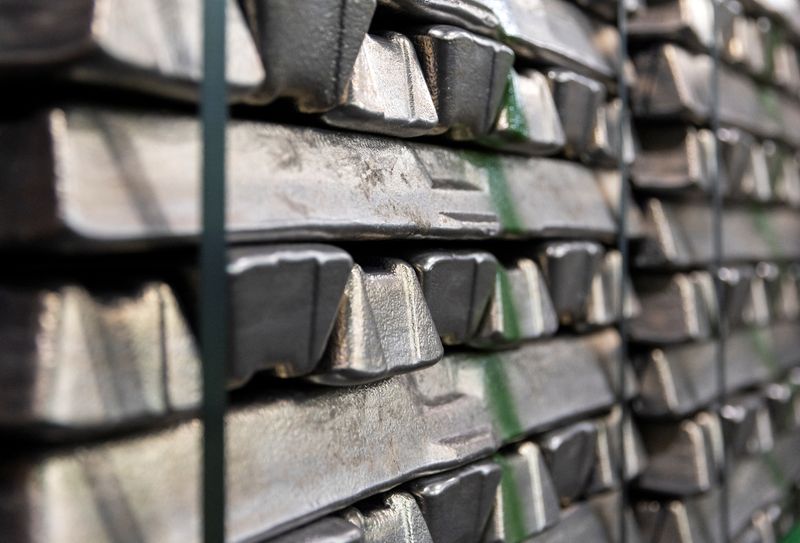
Investing.com — With the Federal Reserve likely to initiate rate cuts at its next meeting on Sept. 17-18, investors are increasingly focused on the potential impacts of U.S. monetary easing on industrial metals in particular and .
HSBC analysts have constructed two possible scenarios, offering insights into how copper and aluminium prices might behave given different economic outcomes.
In a soft landing scenario, where the US economy avoids a recession and the Federal Reserve makes incremental rate cuts (three 25 basis point reductions in 2024 and an additional 75 basis point cut in 2025, according to HSBC’s view), the industrial metals market is expected to follow a similar pattern to that of 2019.
That year, rate cuts were introduced as part of a mid-cycle adjustment to prevent an economic slowdown. Copper and aluminum prices remained largely range-bound as the market had already priced in the economic slowdown before the cuts.
In this scenario, we could see a repeat of the 2019 trend. Demand had weakened before the cuts, and it took about two months after the first rate cut for copper and aluminum prices to form a W-shaped bottom.
Prices gradually recovered. The market’s subdued reaction was due to the fact that rate cuts were aimed at maintaining economic momentum rather than responding to a crisis, which limited both the upside and downside potential of these metals.
Similarly, a rapid recovery is possible in the next rate cycle, but prices are likely to remain range-bound unless there is a significant pick-up in demand.
If the US economy enters a recession, the Federal Reserve is expected to respond with more aggressive rate cuts.
“We believe metal prices will likely follow the path seen during the dot-com bubble of 2000-2003,” the analysts said.
During that period, both copper and aluminum experienced significant declines (copper down 34% and aluminum down 28%) during a prolonged recession as global demand weakened.
If a recession materializes, industrial metals prices could experience a sharp decline, falling by as much as 20% over the next year.
This scenario highlights the vulnerability of industrial metals to prolonged economic weakness. A recession would deepen the demand shock, extending the period of price declines.
In the past, such declines have caused metal prices to bottom out only after aggressive rate cuts have taken hold in the economy and growth begins to stabilise.
Despite potential challenges, HSBC favours aluminium in its Asia metals and mining coverage. Analysts argue that aluminium may show greater resilience compared to copper during this price cycle due to a combination of supply constraints and robust demand stemming from the ongoing energy transition.
Limited supply along the aluminium value chain, supported by high alumina prices, is expected to provide a strong buffer.
This resilience could protect aluminium prices from the full impact of the economic downturn, particularly if governments could increase investments in energy transition projects to stimulate growth.
In addition, the aluminium market has structural factors supporting its price. Chinese authorities have limited capacity expansion and global production growth remains limited.
This supply inelasticity, combined with strong demand drivers such as the energy transition, positions aluminium as a more favourable investment during this period. Key players in the sector such as China Hongqiao and Chalco are expected to benefit from resilient margins and production growth. HSBC projects strong earnings growth for these companies in 2024, supported by full capacity utilisation and elevated margins.
Looking at past rate-cut cycles, several parallels emerge that can help guide expectations for the current one.
For example, during the soft landing of 1995-1996, copper and aluminum prices experienced moderate declines, but recovered as macroeconomic indicators improved.
However, during deeper economic crises, such as the dot-com bubble of 2000-2003 and the global financial crisis of 2007-2009, metal prices experienced steeper and longer declines, followed by a slower recovery.
In the most recent 2019-2020 cycle, Fed rate cuts were initially part of a mid-cycle adjustment.
Copper and aluminum prices fell by about 15% and 12%, respectively, but began to recover before the COVID-19 pandemic hit.
The subsequent recovery in prices was driven by renewed manufacturing activity and a weaker US dollar, factors that could again weigh on the current cycle.
While historical rate-cutting cycles provide valuable insights, HSBC analysts caution that the relationship between industrial metals prices and monetary easing only tells part of the picture.
The sentiment-driven impact of rate cuts on metal prices does not fully capture the complexities of supply and demand.
Tight copper and aluminium supply chains, compounded by underinvestment in new copper projects and capacity constraints in aluminium production, provide a strong layer of support for prices.
Meanwhile, energy transition demand, a growing force in the copper and aluminum markets, tends to be less sensitive to macroeconomic cycles. Government spending on energy transition initiatives, such as the US Inflation Reduction Act, is likely to persist, acting as a buffer against weaker industrial demand.

